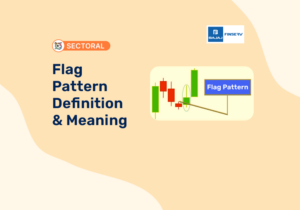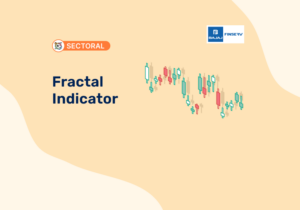Morning Star Candlestick Pattern
Last Updated on December 19, 2023 by BFSLTeam BFSLTeam

Within the domain of technical analysis, Morning Stars shine as optimistic signs in the often complex world of stock trading. These patterns, composed of three candlesticks, hold a place of esteem among experts as they signal a possible shift in the ongoing price trend. The Morning Star, a bullish candlestick pattern, takes three days to form. It stands out as a vital pattern with the ability to reverse a downward trend. What makes it special is how it is created – by combining three consecutive candlesticks, each with its unique story to tell.
In this blog, we’ll break down what the Morning Star Candlestick Pattern is, how to identify it, and its significance in the world of trading.
Table of Content [hide]
What Is a Morning Star Candlestick Pattern?
It is a three-candle reversal pattern that appears at the end of a downtrend. This pattern signifies a potential trend reversal from downward (bearish) to upwards (bullish), making it valuable for traders seeking buying opportunities.
The three candles that make up the Morning Star pattern are as follows:
- Bearish Candle: The first candle is a large bearish (downward) candle, indicating that the sellers are in control of the market.
- Doji or Small Candle: The second candle is a small one, often a Doji or a spinning top, which indicates indecision in the market. It suggests that the bears are losing their grip, but the bulls haven’t taken control yet.
- Bullish Candle: The third candle is a large bullish (upward) candle that confirms the trend reversal. It suggests that the bulls have regained control, and it’s a good time to consider buying.
Additional read: Technical Analysis Guide
How to Identify Morning Star Candlestick Patterns?
Here are the key steps to recognise the Morning Star Candlestick Pattern
- Downtrend in Progress: The Morning Star pattern should appear after a clear downtrend in the market. Look for a series of decreasing lows and lower highs on your chart.
- First Bearish Candle: The pattern starts with a long, bearish candle. This candle should have a substantial body, indicating strong selling pressure.
- Second Indecisive Candle: Following the bearish candle, you’ll see a small candle, often a Doji or spinning top, which reflects uncertainty and indecision among traders. It signifies that the bears are losing momentum.
- Third Bullish Candle: The final candle in the pattern is a bullish one, and it should have a large body, signalling that the bulls have taken control. This candle confirms the trend reversal.
Additional Read: What Is a Candlestick Pattern?
Morning Star vs. Doji Morning Star
Now that you understand what a Morning Star Candlestick Pattern is, it’s essential to differentiate it from a similar-sounding pattern known as the “Doji Morning Star.” While they share some similarities, they have distinct characteristics. The key difference lies in the second candle:
- Morning Star: In the Morning Star pattern, the second candle is a small one, often a Doji or spinning top, indicating indecision in the market.
- Doji Morning Star: In the Doji Morning Star, the second candle is a Doji candlestick, a specific type of candlestick with an opening and closing price that are nearly equal. This candle strongly emphasises market indecision.
Additional Read: Head and Shoulders Chart Pattern
Morning Star vs. Evening Star
These two patterns are like opposite sides of the coin and can help you determine the potential direction of a trend.
- Morning Star: As mentioned before, the Morning Star is a bullish reversal pattern that emerges when a downtrend concludes, indicating a possible shift from a bearish to a bullish trend.
- Evening Star: Conversely, the Evening Star is a bearish reversal pattern that materialises when an uptrend reaches its end. It also involves three candles, but in the opposite sequence: a bullish candle, a hesitant candle (typically a Doji), and a bearish candle. The Evening Star signifies a potential transition from a bullish to a bearish trend.
Additional Read: What is Pyramid trading?
Limitations of the Morning Star Pattern
- False Signals: Like any technical indicator, the Morning Star pattern is not foolproof. There can be instances where it appears but doesn’t lead to a significant trend reversal.
- Confirmation Required: It’s crucial to wait for confirmation before making a trading decision based on the Morning Star pattern. This confirmation typically comes in the form of a strong bullish candle following the pattern.
- Market Context Matters: The reliability of the Morning Star pattern depends on the overall market situation. It tends to be more dependable when it emerges following an extended period of declining prices, as opposed to when the market is trading sideways.
- Risk Management: While the Morning Star pattern can indicate a potential trend reversal, it doesn’t provide information about stop-loss levels or profit targets. Traders should use proper risk management strategies alongside this pattern.
Conclusion
The Morning Star Candlestick Pattern is a valuable tool for Indian traders and investors looking to improve their technical analysis skills. To recognise the Morning Star pattern, keep in mind the arrangement of three candles: a downward (bearish) candle, a small indecisive candle, and an upward (bullish) candle. However, always exercise caution and confirm the pattern with a strong bullish candle before taking any trading action.
Be aware of the pattern’s limitations and use it as part of a comprehensive trading strategy. By combining the Morning Star pattern with other technical analysis tools and risk management strategies, you can increase your chances of making successful trades in the dynamic Indian market.
Disclaimer: Investments in the securities market are subject to market risk, read all related documents carefully before investing.
This content is for educational purposes only.

